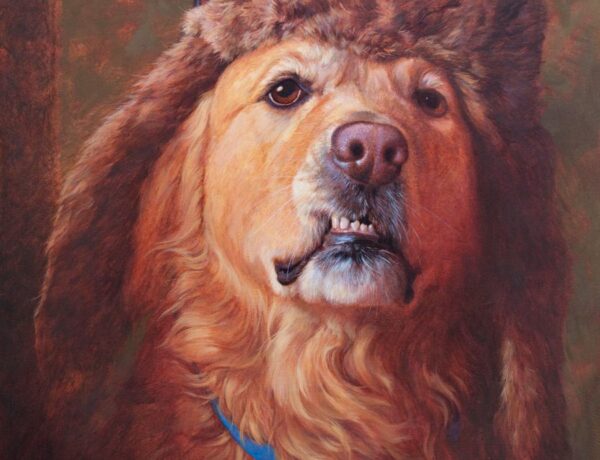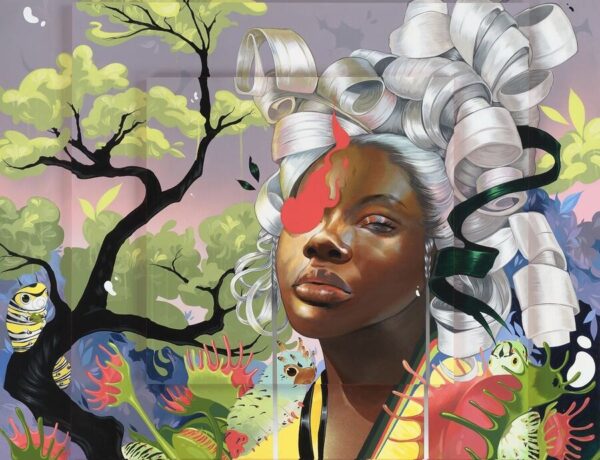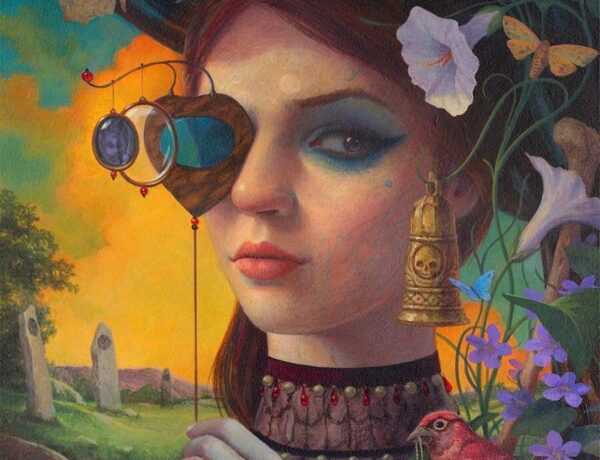The Italian artist Giulio Cinti is part of a long tradition of Italian artists whose artistic sensitivity no longer needs to be proven. By combining a precise technique and a singular creative vision, the artist seems capable of breathing life through his creations. Sculptor and architect by profession, the artist is a true Renaissance man traveling between two forms of expression with different finalities, certainly but remaining connected harmoniously and richly.
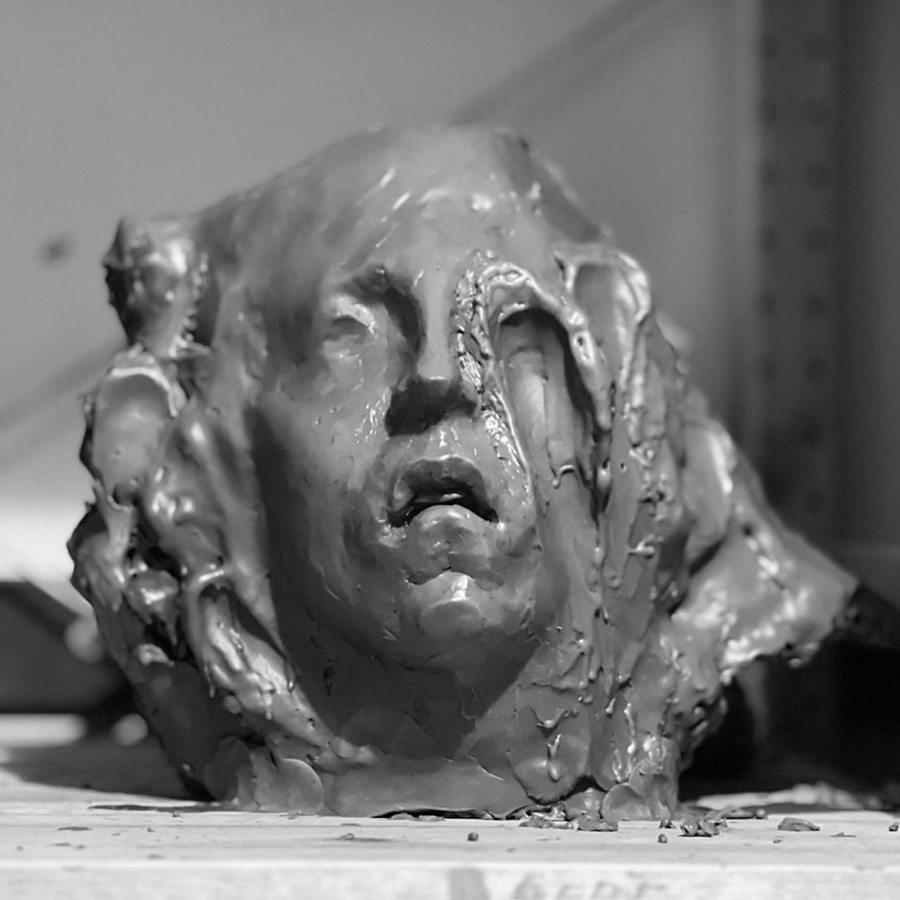
One could assert that architecture and sculpture sometimes blur their formal boundaries to the point of merging. Indeed, sculpture has always borrowed elements from architecture, and conversely, the latter has used the forms and structure of the former – let us simply think of the statue-columns, the caryatids of the Erechtheion on the Acropolis of Athens, or even the sculpted religious icons of European Catholic churches.
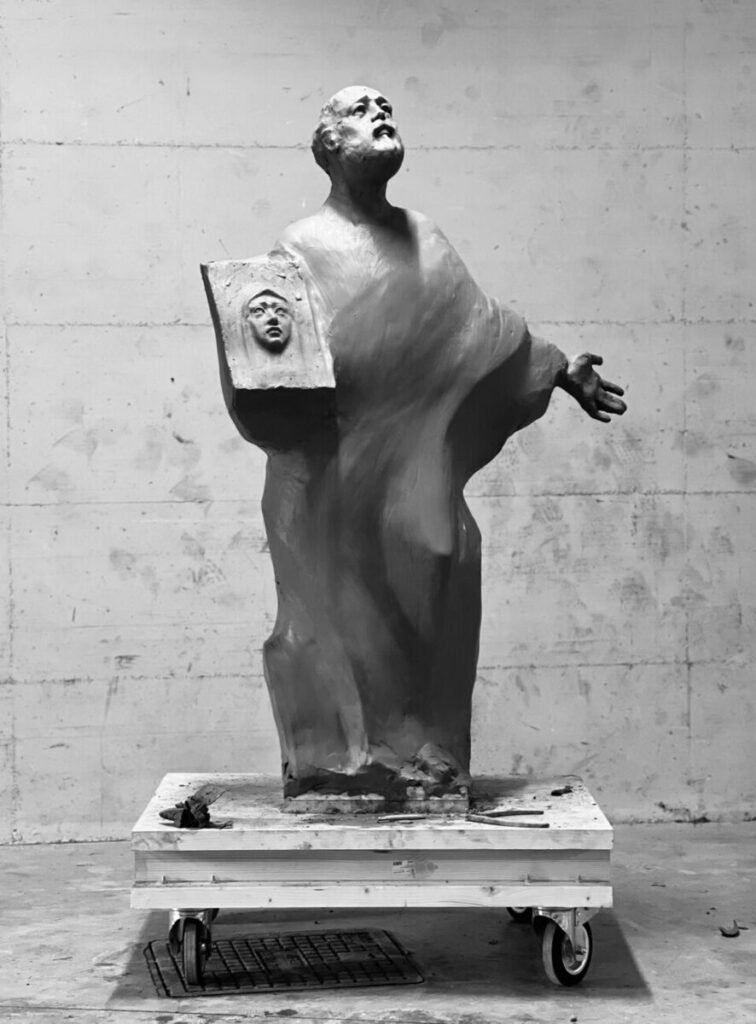
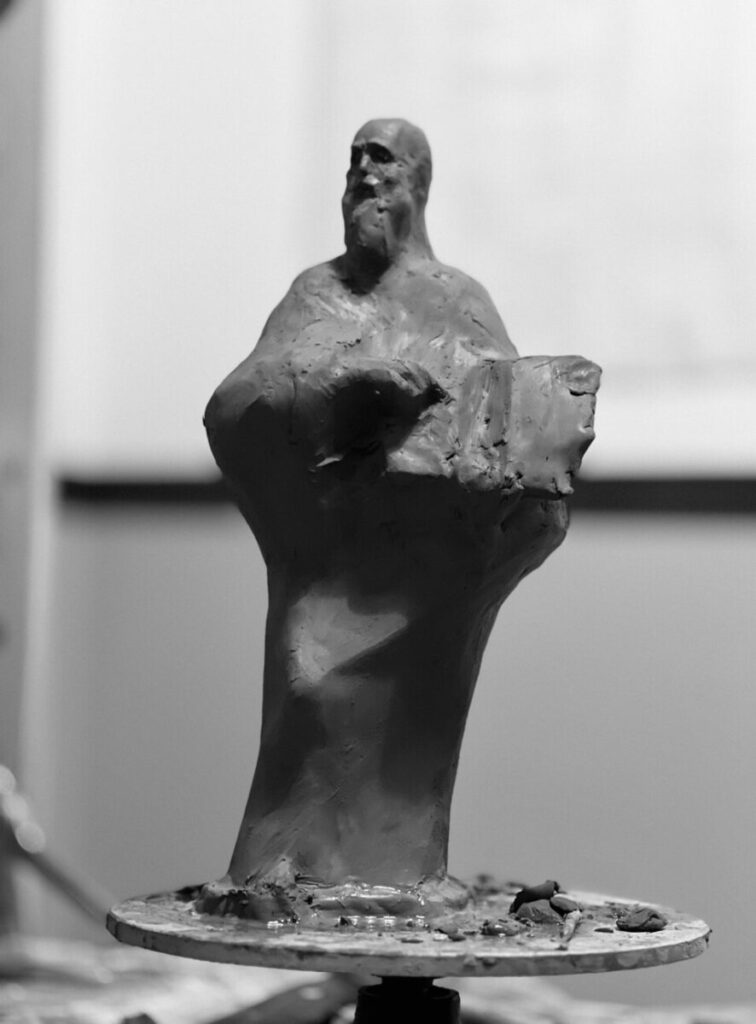
This interaction between architecture further underlines the fact that sculpture is a specific art insofar as it intervenes directly in the common space, whether private or public, real or symbolic. In this way, sculpture combines its aesthetic issues with the anthropological, political, and historical questions of human communities.
Whether pigmented red or forged in bronze, Giulio Cinti’s statues bear the mark of a certain spirituality of modern times. Pious saints, faces that melt into themselves, and melancholic gazes are shaped in such a way that they trigger, in all spectators, a kind of deep reverence, which transcends each person’s religious or political convictions. Giulio Cinti wants to provide everyone with the possibility of escaping the real world through his art which he intended to be free from any label while maintaining a form of homage to the artists of the past.
Moreover, one of Giulio Cinti’s main concerns is to participate in the enrichment of all facets of humanity through his art and to go beyond the clichés assigned to contemporary Italian sculpture.
It is with pleasure and deep admiration that we interviewed the artist Giulio Cinti about the meaning of his art and his creative vision.

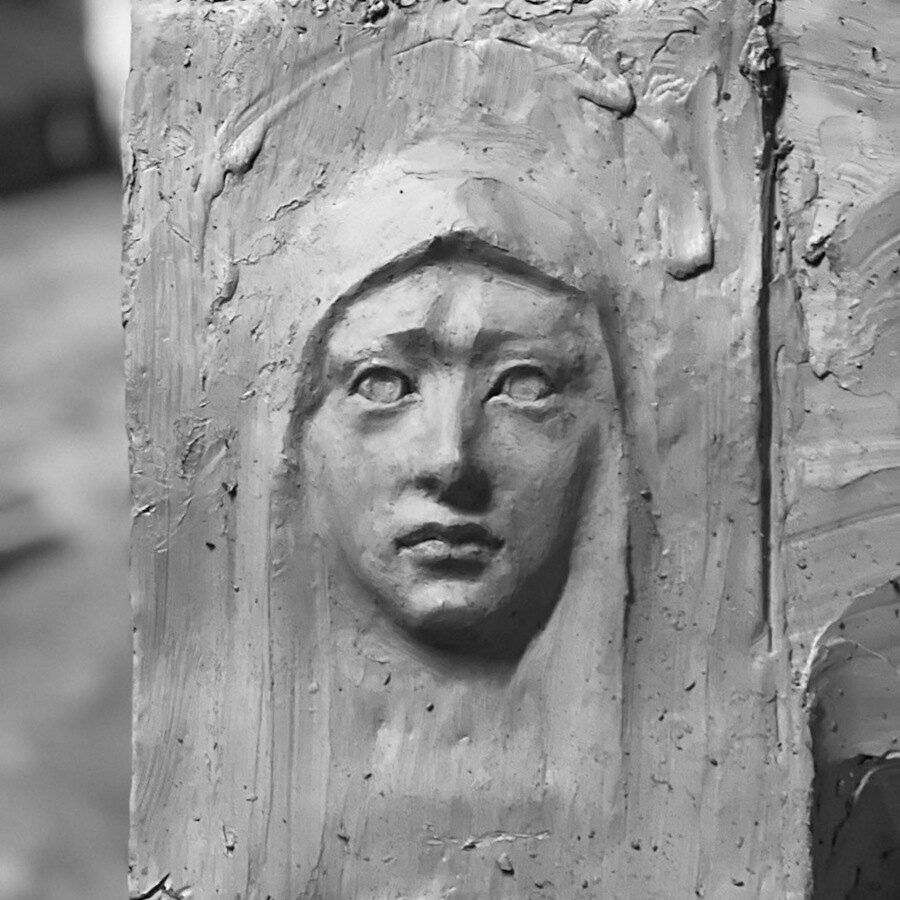
I believe art should contain both a narrative and a vision, to help us escape.
EXCLUSIVE INTERVIEW WITH GIULIO CINTI
Tell us more about your journey as an artist! When did you know you wanted to become a sculptor? Did you receive formal training?
I believe I was born with an innate drive to mold matter and materials. From a young age, I’ve always felt the need to physically realize my ideas. My true beginning was around the age of 21 when I tried to win my wife’s heart. At the time, we had just started dating, and I gave her a silver bracelet in the shape of a swan that I crafted especially for her.
After that, my entire family urged me to explore this talent. My training has been self-taught; I have no formal academic background in sculpture. I am an architect by profession, and it was during my architectural studies that I also delved into sculpting, driven by an inner need.
What are some common misconceptions about Giulio Cinti’s art?
It varies. My artistic language has developed independently, creating an original and standalone voice, distant from academic influences. To those heavily influenced by the figurative, hyperrealism, or classical styles, my art may seem misaligned with the mathematical beauty that many aspire to. Conversely, those rooted in abstract or conceptual art might sense figurative inclinations in my work that counter their tastes.
Especially in Italy, religious references can be unnerving or even scorned, perhaps due to lingering traces of modernism or provincial clichés. I believe art should contain both a narrative and a vision, to help us escape. No categorization, as valid as it might be, should determine what is good or bad art but should merely enrich the facets of human expression.
I see my sculptures as silent protagonists in a theatrical scene.
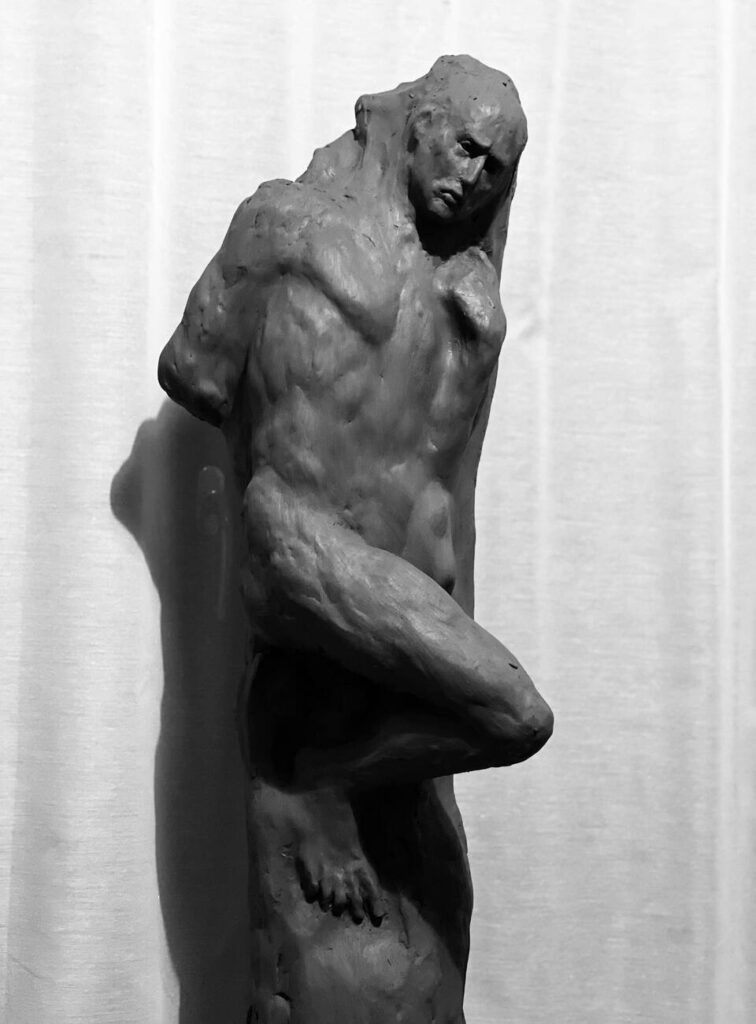
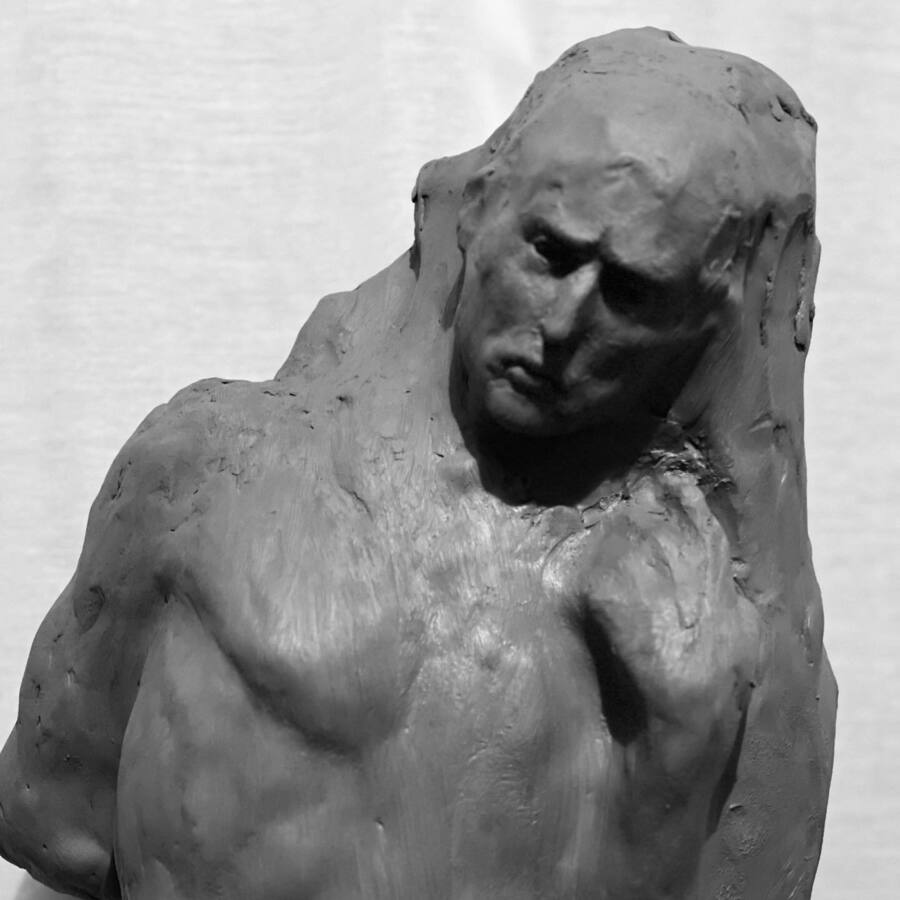
Walk us through a typical day in your studio.
I divide my day into two phases. Mornings are dedicated to architectural planning for my firm, and afternoons focus on sculpting and artistic research. The work schedule changes depending on the production phase I’m in. I might be sketching in clay, assembling the structure onto which I’ll mold the clay for an art piece, or in the final stage of creating molds for reproductions.
What are your principal sources of inspiration?
Fundamentally, drama, theater, and literature greatly inspire and reflect upon me. Often, I see my sculptures as silent protagonists in a theatrical scene, as if they are the frozen main characters of an imaginary play or story. Music also plays a crucial role, helping me capture the atmosphere surrounding my creations. For instance, the musician Burial consistently underscores my research and remains one of my significant inspirations.
Which sculptures of your own are your favorites?
I believe my favorite is “Congiura.” It emerged spontaneously and significantly impacted social media, resonating with many people’s understanding of my vision. Additionally, “San Giovanni,” part of the sculptural group of the Four Evangelists that will be placed on the facade of the San Pio X church in Balduina, Rome, holds a special place in my heart. “Penombra” also stands out for its unique weight and simplicity.

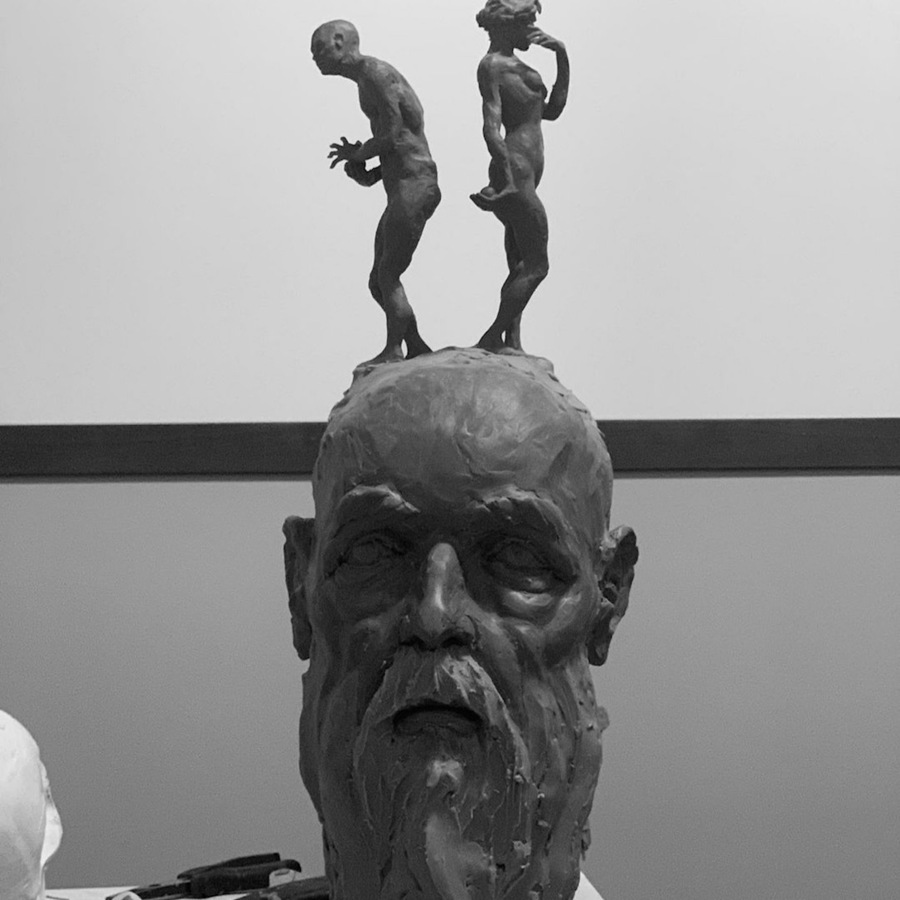
A valuable piece is one that, given time to mature, asserts its presence and is recognized as Art.
Your art offers a pretty unique and soulful perspective… Do you think uniqueness is a trait all artists should have?
Absolutely, I strongly believe in art’s getaway power. Art should transport us to a dimension that allows better self-understanding. An artist’s role is to create a vision or scene to immerse the audience in a narrative. Inevitably, this process will possess a trait of uniqueness, as each artist is unique. So, artists should deeply explore and embrace this trait.
Do you, Giulio Cinti, encounter any challenges when creating your art?
Yes, I constantly face a multitude of challenges. These span from content research to the practical execution of artwork production. Challenges emerge from ideation, content expression, modeling to align with the original idea, and later in material and color choices, mold creation, and art reproduction in the chosen medium.
Your piece seems to transcend time and space… what is your relationship with time as an artist?
I view time as the most refined and tangible form of Spirit. Works gain their significance over time, and time becomes an essential ingredient during the crafting process, binding me to my creations. A valuable piece is one that, given time to mature, asserts its presence and is recognized as Art, fulfilling a need to convey a story or message.
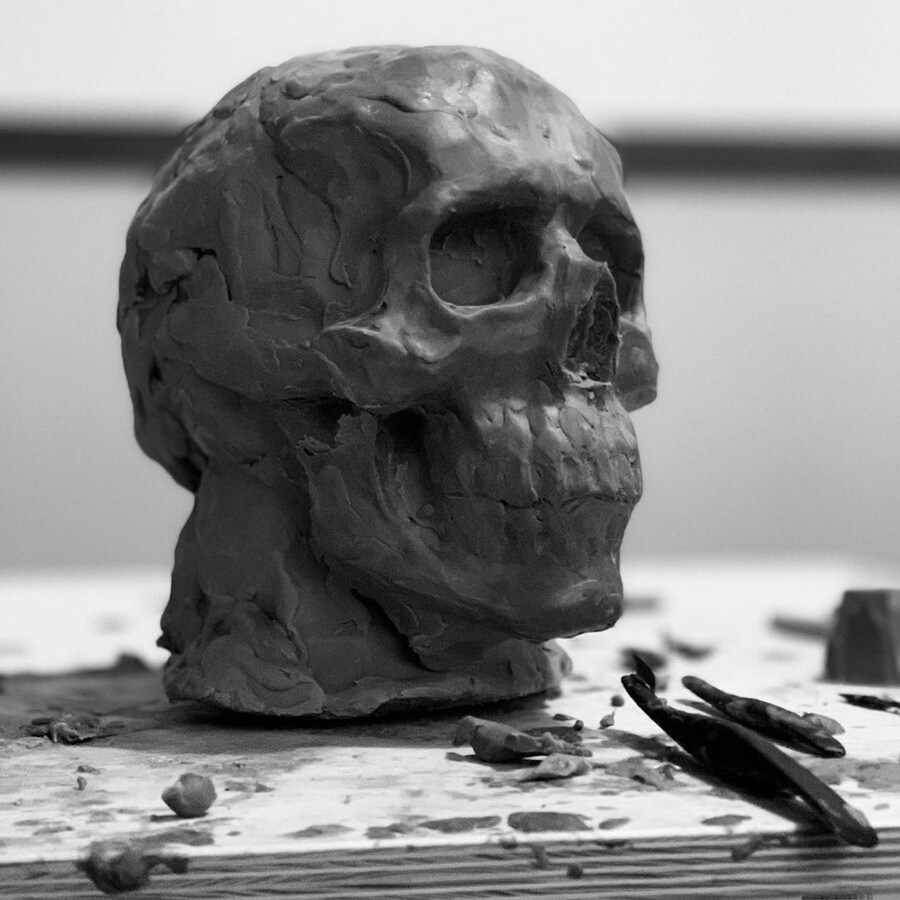
You, Giulio Cinti, are an experienced and prolific artist… what piece of advice would you give younger artists looking to hone their skills?
I’d advise them to develop their language, vision, and unique way of telling a story or conveying a thought or reflection. In doing so, they will make mistakes and might not always receive support, but passion will drive them forward.
Are you, Giulio Cinti, a reader of Beautiful Bizarre? What do you enjoy about the magazine?
I am deeply enamored with Beautiful Bizarre. I believe it closely aligns with an ultracontemporary artistic vision that resonates with newer generations. It’s a magazine that shines a spotlight on significant authors of our century, effectively conveying new languages pertinent to our era. In my view, one can only have a complete understanding of contemporary culture by knowing Beautiful Bizarre Magazine.




